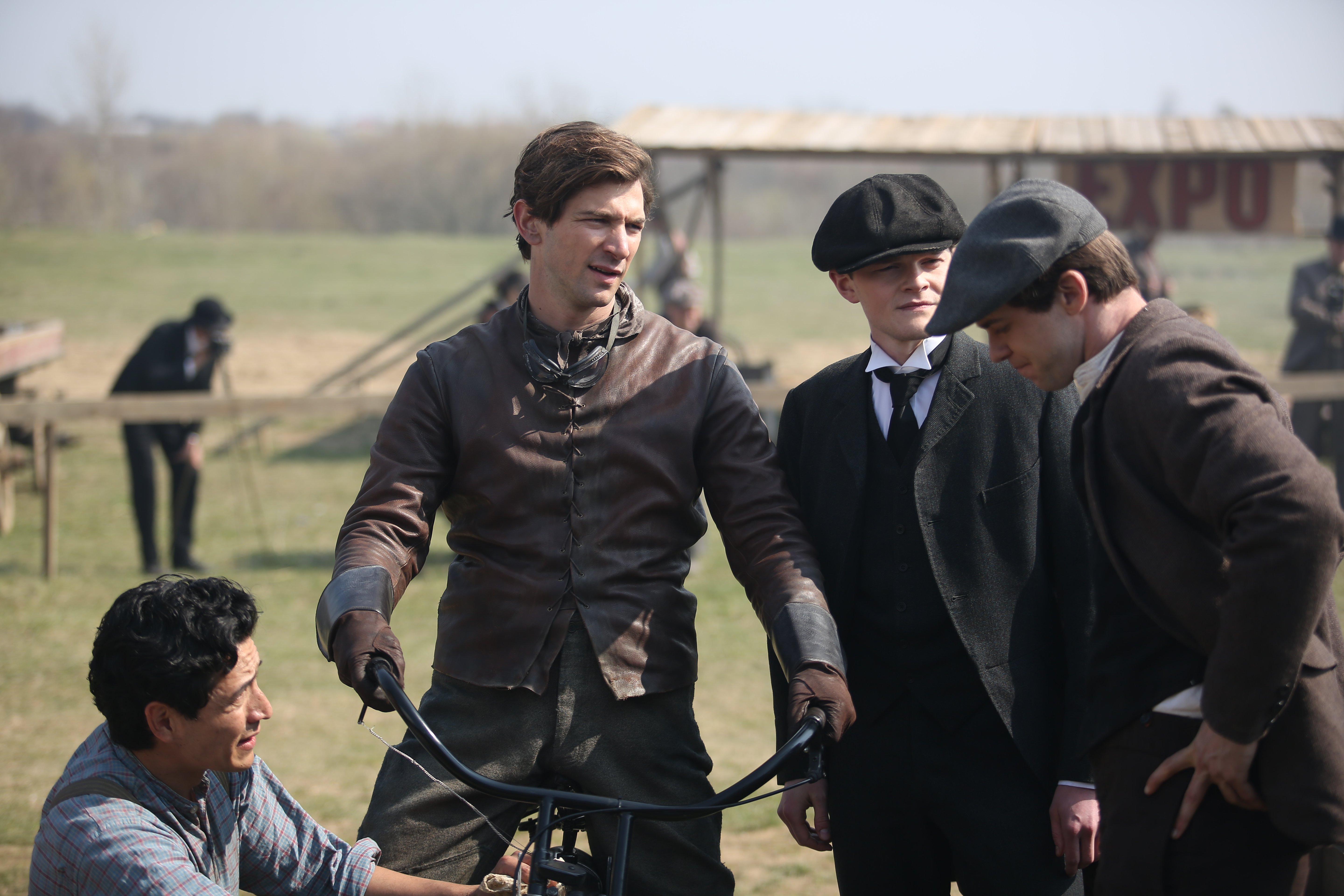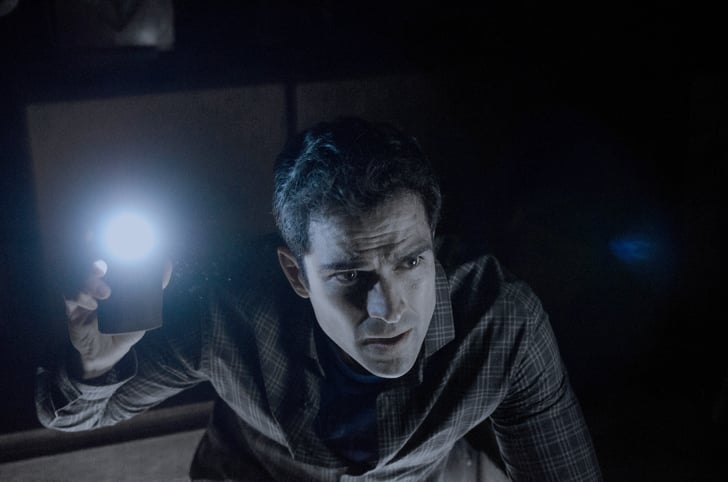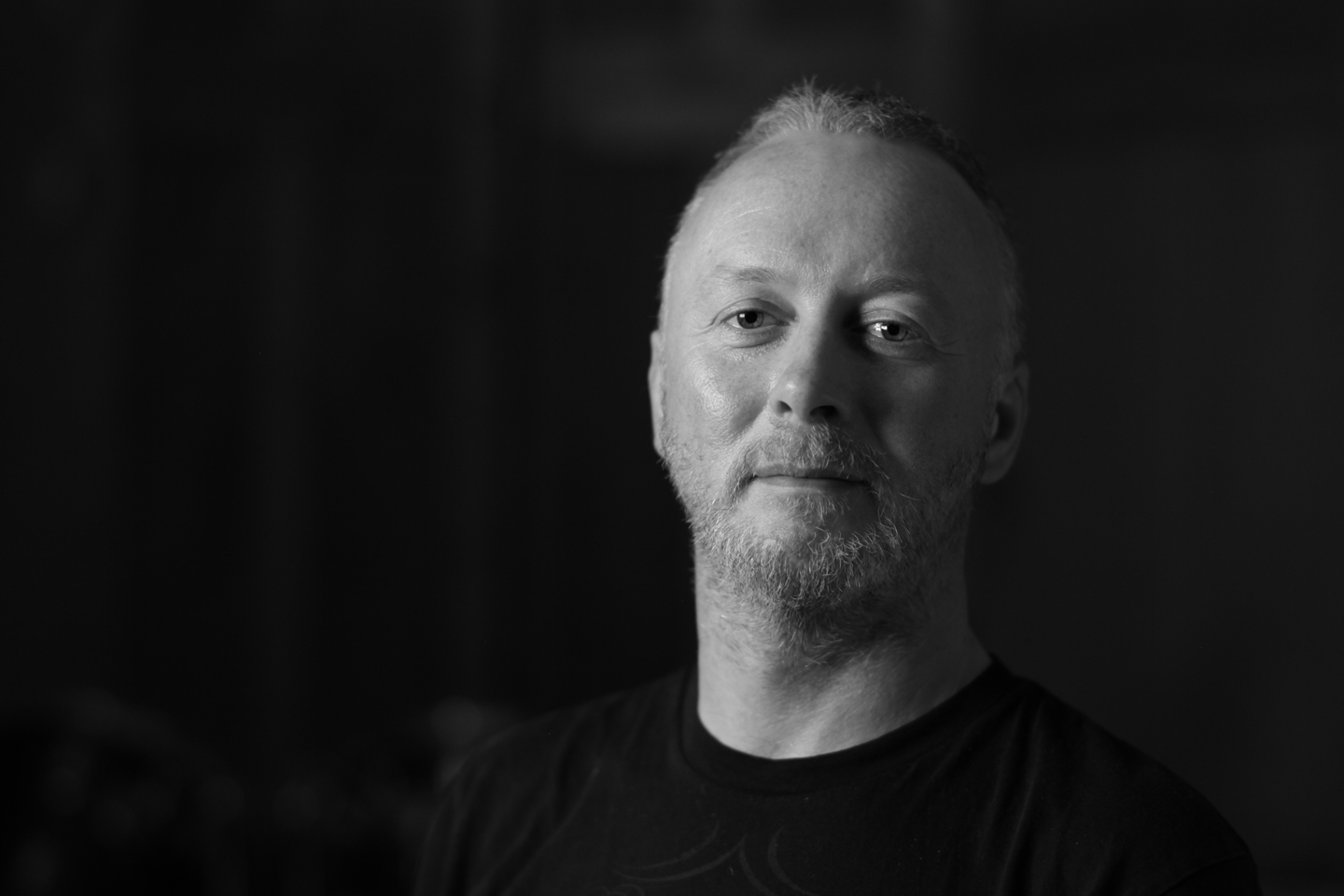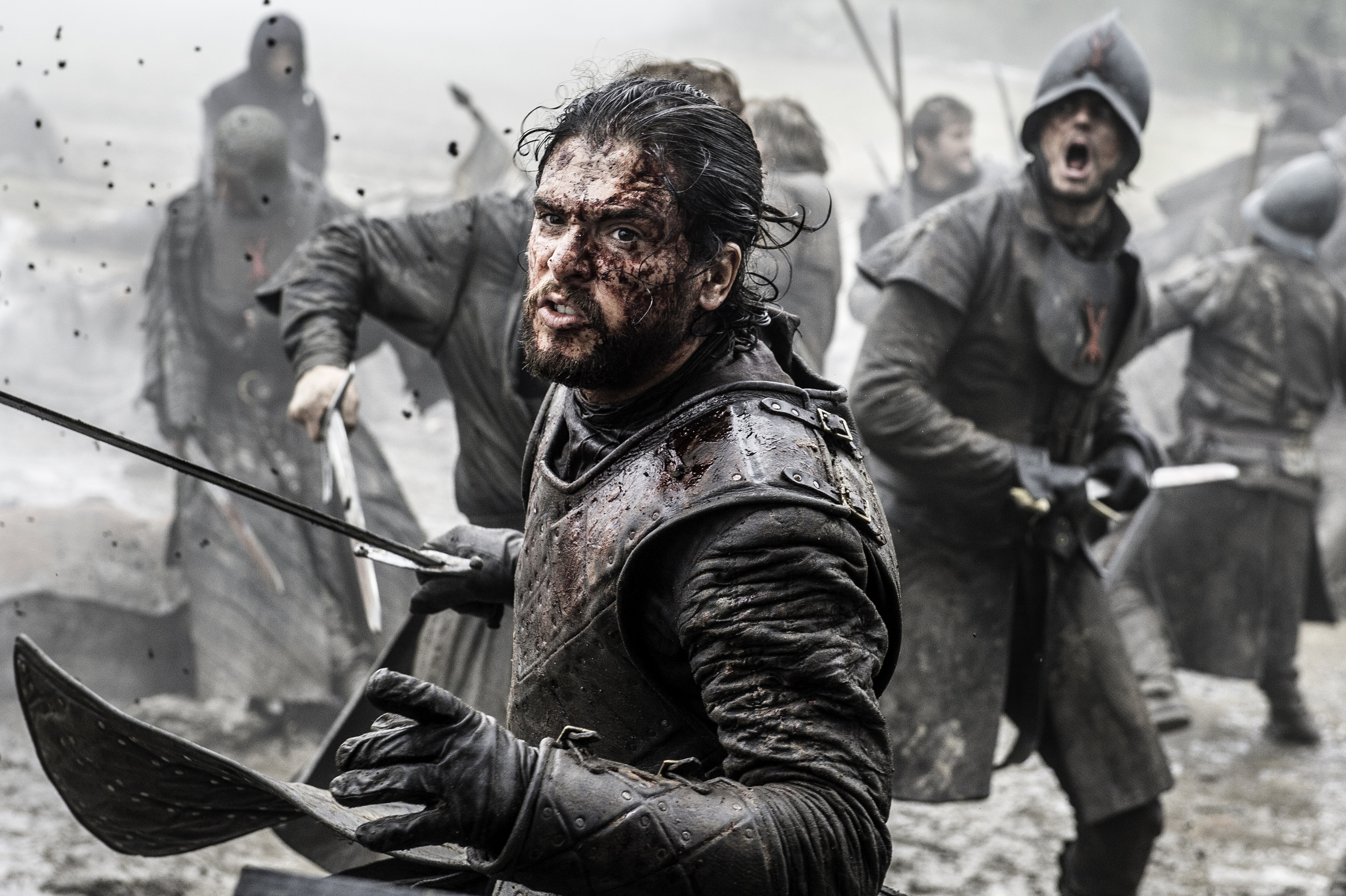
ASC Awards Television Nominees: Profiles in Creativity
The nominees in the three ASC Outstanding Achievement Awards television categories for 2016 display diverse and exceptional talents.

Each of this year’s nominees in three ASC Outstanding Achievement Awards television categories sought to capture a unique way to present their respective stories. Here, the cinematographers offer a bit of insight into their approach and the reason why they selected this particular work for ASC Awards consideration. This year's three ASC Award winners in these categories were announced during a ceremony held on February 4.
Television Movie, Miniseries or Pilot

Balazs Bolygo, HSC, BSC
Harley and the Davidsons, “Amazing Machine”
Discovery’s historical miniseries documents the struggles of three men, the sons of blue-collar immigrants: Walter Davidson, Arthur Davidson and Bill Harley, who risked their lives and fortunes to found the Harley Davidson Motor Company amidst a technological and economic upheaval in the early 20th century.

Cinematographer and previous ASC Award-winner Balasz Bolygo receives his second nomination for the first of the series’ six episodes, entitled “Amazing Machine,” which sets the stage for this classic American David-beats-Goliath story. In 1903, the Davidson brothers start building motorcycles in a shed behind the family home, but despite their engineering triumphs, the company’s success is threatened when industry titan Indian Motorcycles mounts a campaign to push all competition out of the market. When Indian rolls into town to stage a big motorbike race, Harley and the Davidsons put everything on the line to put their fledgling business on the map.
“I chose to submit the first episode of Harley and the Davidsons [for ASC Awards consideration] because I felt it set the tone and pace of the story for the series,” says Balasz. “It was a challenging narrative to convey as we really wanted an immersive experience for the audience, especially when it came to the motorbike races, which in turn threw a lot of creative and technical challenges in our way. I also wanted a fluidity for the film and not make it too ‘biscuit tin’, as the period was fairly harsh and gritty.”

Paul Cameron, ASC
Westworld, “The Original”

Based on the 1973 Michael Crichton film of the same name, HBO’s Westworld updates the premise of a futuristic amusement park for the ultra-rich that allows its visitors to live out their Wild-West fantasies with the help of uncannily human-looking and behaving robot “hosts.” However, the park’s carefully curated illusion starts to crumble when the hosts show signs of developing their own consciousnesses, forcing the park’s security and operations team to seek increasingly creative and ethically-challenged ways to maintain control.
Paul Cameron earns his second ASC Award nomination for the pilot episode “The Original,” in which the hosts first exhibit signs of strange behavior. When park operations discovers a code error in a software update that allows hosts to recall past experiences, they order a recall on the affected hosts and stage a mass murder to cover for it. This new plot twist alters the park’s narrative and sets the stage for grim revelations in later episodes.
“As soon as I met director-writer Jonathan Nolan, I knew I wanted to do the project,” says Cameron, who was brought onto the show during the pilot’s conceptual phase, and advocated for the use of Kodak 35mm film stock. “We wanted the project to have a big-screen feel, from vast landscape images of the west, to the dark, abandoned basement of the park operations center. I am honored and ever so thankful for my ASC peers to acknowledge this work.”

Jim Denault, ASC
All The Way

Directed by Jay Roach, All The Way is HBO’s feature-length adaptation of Robert Schenkkan's Tony Award-winning play about the early days of Lyndon B. Johnson's presidency, from the assassination of John F. Kennedy to the battle over the Civil Rights Act of 1964 and his campaign to stay in the White House.
The film spans President Johnson’s (Bryan Cranston) tumultuous first year in office as he copes with the fallout from Kennedy’s assassination while trying to honor Kennedy’s legacy by signing the historic Civil Rights Act into law. Johnson finds himself caught between the moral imperative of Dr. Martin Luther King, Jr. (Anthony Mackie) and the expectations of the southern Democratic Party leaders who brought Johnson to power. As King battles to press Johnson while controlling more radical elements of the Civil Rights Movement, Johnson navigates the bill through Congress, winning a landslide victory against Barry Goldwater, but causing the South to defect from the Democratic Party.
“I’m really proud of our work on All The Way,” says Jim Denault, whose warm, muted color palette evokes both the era and the photographic evidence of it, and also earns him his first ASC Award nomination. “It was a convergence of perfect conditions. The script, performances and historical subject matter gave us the opportunity to do compelling and important work every day.”

Alex Disenhof
The Exorcist, “Chapter One: And Let My Cry Come Unto Thee”

Based on the 1973 film of the same name Fox’s Exorcist television adaptation follows two priests who try to save a family from being terrorized by a demonic presence.
Series cinematographer Alex Disenhof earns his first ASC Award nomination for the pilot episode, in which hotel executive Angela Rance visits her Chicago parish searching for help with her daughter, who has begun to exhibit strange behavior in the wake of a traumatic experience. After a vomit-inducing encounter with Rance’s daughter, the young Father Tomas seeks turns to the elder Father Marcus, who’s being sequestered by the church for the death of a possessed child during one of his traditional exorcism rituals. The two priests then meet Mother Bernadette, a cloistered nun with a very different approach to casting out demons.
According to Disenhof, The Exorcist writer Jeremy Slater, showrunner Rolin Jones, and director Rupert Wyatt wanted to push the boundaries of what was acceptable for network TV, both thematically and visually. “While I had fun paying homage to the original film, it was also important to establish our own look and feel for a new story,” he remarks. With the scope of the story stretching from Mexico to Chicago, Disenhof was able to develop a distinct look for each locale. “Mexico allowed for a bit of color and texture, and I drew inspiration from film noir and classic horror for my night work there, using deep shadows and silhouette,” he describes. “By contrast, Chicago's overcast winter skies were a perfect inspiration for the oppressive atmosphere and sense of foreboding we were after.”

Igor Martinovic
The Night Of, “Subtle Beast”

Based on the BBC series Criminal Justice, The Night Of is an eight-part limited series that tells the intricate story of a murder case in New York City. After a night of booze and drug-fueled partying, Pakistani-American college student Nasir Khan wakes up next to the corpse of a mysterious young woman. The police find the murder weapon in his possession, and Nasir is incarcerated at Riker’s Island to await his trial.
Cinematographer Igor Martinovic — who shares a series credit with Frederick Elmes, ASC and Robert Elswit, ASC — earned his first ASC Award nomination for the second episode, in which Nasir’s fate slowly comes into focus. With no legal traction to speak of, Nasir is encouraged to keep quiet by his attorney as the police begin to build their case against the student.
“Obscuring can sometimes be more revealing than exposing, and this episode was a perfect vehicle to explore that idea,” says Martinovic. His concept was to get viewers engaged by hiding things from them, using darkness, off-framing, frames within frames, negative framing and filming from behind the subject. “The truth is hidden from every character involved, and the mystery of not knowing the facts was transformed into a visual strategy of obscuring. Just like the characters, the audience doesn’t see everything clearly, and by having to fill it in, they become an active participant in the narrative.”
Regular Series for Non-Commercial Television

John Conroy
Penny Dreadful, “The Day Tennyson Died”

In Showtime’s Penny Dreadful, the gruesome alumni of classical horror literature lurch from their pages to inhabit the darkest shadows of your TV screen. From Mary Shelley’s Frankenstein come the titular doctor and his Monster, followed by Oscar Wilde’s Dorian Gray, Robert Louis Stevenson’s Dr. Jekyll, then Brahm Stoker’s Van Helsing, Mina Harker, and the devilish Count himself — all engaged in an original story about a group of unlikely heroes battling an infestation of vampires in Victorian London.
Cinematographer John Conroy began his run on the series with the season two episode “Evil Spirits in Heavenly Places,” joining an already distinguished roster of cameramen that includes Owen McPolin, Nigel Willoughby, and P.J. Dillon. Conroy’s ASC Award nomination is for the season three opener, which sees London grieving over the passing of poet Alfred Tennyson, while our heroes are scattered about the globe after the momentous events of season two. With “The Day Tennyson Died,” Conroy expands the scope of Penny Dreadful from the foggy banks of the Thames to the frozen Arctic, the deserts of the American West and the jungles of Zanzibar.
“I’m humbled to be chosen by my peers as a nominee this year,” says Conroy. “I'd like to give a shout out to my amazing crew: My steadfast grips Phillip Murphy and Doc, 1st AC Phillip McKeon and gaffer Noel Cullen. My collaborator and Steadicam operator Chunky Richmond. I'd like to thank John Logan and Karen Richards with Showtime for giving me the opportunity to film this amazing project. My father, [cinematographer] Jack Conroy, is my inspiration and it made him happier than anything that I was nominated for an ASC Award. It doesn't get better than that.”

David M. Dunlap
House of Cards, “Chapter 45”
Created by Beau Willimon and executive produced by David Fincher, Netflix’s House of Cards is an adaptation of the BBC mini-series of the same name, which in turn was based on the novel by Michael Dobbs.

Set in present-day Washington, D.C., it tells the story of Frank Underwood, a corrupt, ambitious Southern Democrat and House Majority Whip. In the first season, Underwood is passed over for appointment as Secretary of State, prompting him and his brilliant, manipulative wife Claire to make a power grab for the White House. By the end of the fourth season, the Underwoods have moved into the Oval Office, but a wake of murder, corruption, and betrayal leads the ghosts of their past back to haunt them.
David M. Dunlap continues the series’ tradition of distinguished cinematography with his first ASC Award nomination for the tense 45th episode, in which Claire, as First Lady, reaches to make decisions above her pay grade and clashes with the Secretary of State over financial negotiations with Russia. Meanwhile, Frank languishes in a bed after a would-be assassin’s bullet nearly takes his life.
“‘Chapter 45’ offered an opportunity to take our elegant, realistic style and infamous first couple to yet another level of ferocity,” Dunlap muses. “We were able to illustrate Frank’s hospital bed hallucinations as the ‘hyper-real’ representation of his inner most demons while Claire negotiates complex international agreements in the ‘real’ world.”

Anette Haellmigk
Game of Thrones, “Book of the Stranger”
Now in its seventh year of production, HBO’s immensely popular sword-and-sorcery series Game of Thrones is set in a fantasy world where kingdoms clash and the seasons can last for years at a time. The series is set on the continent of Westeros and tells the story of seven feuding monarchies whose tenuous peace is unraveling into all-out war. Meanwhile far in the north, beyond a vast Wall, a mythical threat stirs, against which Westeros’ only defense is a motley group of criminals and cast-offs called the Night's Watch.

In the show’s sixth season, Westeros braces for a long winter as the evil White Walkers of the North and their army of the dead prepare to breach the wall and invade the realm of man. Cinematographer Anette Haellmigk picks up her third ASC Award nomination for the season’s fourth episode, in which multiple storylines come together and catapult the narrative forward into the series’s final arcs: Daenerys, Queen of Dragons sets the Dothraki Temple on fire. Tyrion Lannister negotiates to end slavery in Meereen. Jon Snow announces his end of watch at Castle Black. Yara confronts her brother Theon Greyjoy inside Castle Pyke.
“As a young girl I dreamed, ‘Someday I’ll be a great painter!’” Haellmigk exclaims. “‘Book of the Stranger’ represents what I try to achieve with every Game of Thrones episode I’ve worked on as a director of photography: to use camera and light to create moving pictures that look like paintings inspired by the Old Masters.”

Neville Kidd
Outlander, “Prestonpans”
Based on the books by Diana Gabaldon, Starz’s Outlander is the story of Claire Randall, a World War II British Army nurse who is magically transported to Scotland circa 1743 and finds herself swept up in the Jacobite risings, a series of conflicts waged with the purpose of returning deposed James II of England and VII of Scotland to the Throne of Great Britain. Using her modern medical experience and knowledge of history, Claire searches for a way home while trying to prevent the catastrophe of an impending war.

By season two, Claire is married to Jamie Fraser, a Highland warrior leading the Jacobite army in its battle against the British. Series cinematographer Neville Kidd receives his first ASC Award nomination for the episode “Prestonpans,” in which Jamie, acting on information about the past provided to him by Claire, risks a potentially devastating encounter with the British opposition.
“I chose to submit this episode because I felt I had succeeded in creating two different moods and styles to contrast the battle and the field hospital,” says Kidd.
The battle sequences were a challenge for Kidd, due to the fact that the actual battle was fought in thick fog. A temporary studio was built to contain the fog, 200 soldiers, a dozen horses and cannons, leaving little room leftover for a camera crew. “The hospital lighting was a combination of hard and soft light, to create a ‘Dutch Masters’ feel,” Kidd notes. “I wanted to create a sense of relief and escape from the gruesome horrors of battle.”

Fabian Wagner, BSC
Game of Thrones, “Battle of the Bastards”
HBO’s immensely popular sword-and-sorcery series is set on the continent of Westeros and tells the story of seven feuding monarchies whose tenuous peace is unraveling into all-out war. Meanwhile far in the north, beyond a vast Wall, a mythical threat stirs, against which Westeros’s only defense is a motley group of criminals and cast-offs called the Night's Watch.


In the show’s sixth season, Westeros braces for a long winter as the evil White Walkers of the North and their army of the dead prepare to breach the wall and invade the realm of man. Cinematographer Fabian Wagner receives his third ASC Award Nomination for the ninth episode of the season, which depicts a massive land battle between the houses Stark and Bolton — led by two literal bastards, no less — to decide the ultimate fate of the lands of the North. This “Battle of the Bastards” is the largest clash filmed for the series, requiring 600 crewmembers, 500 extras, 70 horses, 65 stuntpeople, and four camera units to stage.
“It was all shot for real,” Wagner confirms. “Director Miguel Sapochnik and I wanted to create a battle scene that could visually and creatively stand up to some of the biggest film battles of all time.”
Regular Series for Commercial Television

Tod Campbell
Mr. Robot “eps2.0_unm4sk-pt1.tc”

The first season of USA Network’s Mr. Robot is about Elliot Alderson, a young cyber-security engineer suffering from social anxiety disorder and clinical depression who is recruited into “fsociety,” a group of radical hacktivists trying to erase all debts by cyber-attacking large corporations. In the second season, a disturbed Elliot goes off the grid, leaving the rest of the group to cope with the consequences of their efforts. Both seasons were photographed by cinematographer Tod Campbell, who, along with director-showrunner Sam Esmail, set out to break as many rules of traditional image composition as possible, and whose efforts have yielded one of the most unique-looking shows on television.
Campbell receives his first ASC Award nomination for the season two premiere, in which Elliot moves in with his mother in an attempt to weaken the influence of the hacker group’s leader, "Mr. Robot." Meanwhile, fsociety launches a mission to bring down a multinational bank by holding their records for ransom.
“I chose to submit this episode because it embodies a little of everything we do on the Mr. Robot set: interior day and night and exterior day and night, practical locations, and stages,” says Campbell. “It starts with three scenes shot in one continuous take, and I love the transitions we came up with to connect them. Specifically, the scene in Elliot’s mom’s house perfectly represents the mood, via lighting and composition, as well as the story of Mr. Robot 2.0.”

John Grillo
Preacher “Finish the Song”

Based on the DC/Vertigo comic series of the same name, AMC’s Preacher is about a former Texas reverend named Jesse Custer who is inhabited by a rogue spirit that gives him the ability to make people do whatever he says. The possession attracts the attention of two ruthless angels who pursue Custer, his tough-as-nails ex-girlfriend Tulip, and an Irish vampire named Cassidy across Texas and into a battle between Heaven and Hell.
Cinematographer John Grillo receives his first ASC Award nomination for the penultimate first season episode “Finish the Song” (directed by Michael Slovis, ASC), in which the two angels recruit a murderous 19th-century gunslinger named the Cowboy, and Jesse faces the consequences of sending the town sheriff’s son to Hell while Tulip tries to quietly rehabilitate a gravely injured Cassidy at the home of her drunken uncle Walter.
In prep, Grillo studied the photogravures of Edward S. Curtis and the paintings of Andrew Wyeth for inspiration. For the Cowboy’s flashback scenes, he wanted to imbue his digital material with as much texture as possible, using a combination of Panavision PVintage lenses, chocolate filters, and atmosphere on set to create the impression of an Old West photograph in motion. LiveGrain was used in post to add a pushed negative look to the footage.
“It’s a rare opportunity in commercial TV to experiment and be given free reign on the look of a show, but AMC has demonstrated a desire to push the envelope and allow their series to develop their own personalities,” says Grillo. “The look of a particular show is not born from one person alone, it’s a combination of the talents and experience of many people from all departments and the inspiration that we all draw from each other."

Kevin McKnight
Underground “The Macon 7”

It’s 1857, the year of the Dred Scott decision in which the United States Supreme Court ruled 7-2 that blacks can’t be citizens and Congress can’t outlaw slavery. Meanwhile, in Georgia, a blacksmith slave named Noah discovers a map leading to the Underground Railroad, a network of secret routes and safe houses used by African American slaves to escape into free states and Canada.
Cinematographer Kevin McKnight receives his first ASC Award nomination for the series premiere, in which Noah recruits a handful of fellow slaves — a teenaged sidekick, a strongman, a carpenter, a priest — to mount the breakout. Meanwhile their master enlists the assistance of an abolitionist lawyer to beef up his gubernatorial campaign. “The Macon 7” opens with a blurry, inverted image that abruptly flips right-side up to reveal a man fighting his way through the woods at night, in a chase sequence cut to Kanye West’s “Black Skinhead.” From the get-go, the visual language of Underground makes its statement: “This is not going to be another history lesson,” says McKnight.
“The whole 1850’s-period-piece-slavery-pre-Civil-War storyline has been told so many times. Our challenge was to separate our narrative from what’s been previously done,” he continues. “While this time frame serves as our backdrop, our point of view is not merely the documentation of events, but rather the illustration of personal perspectives from a group of ordinary people who rose to extraordinary heights. This is the call to action to break the shackles that constrict one’s worldview and literally, flip it on its axis.”

Christopher Norr
Gotham “Wrath of the Villains: Mr. Freeze”
Fox’s Gotham is a unique take on the Batman mythos, set years before Bruce Wayne, traumatized by the senseless murder of his parents, dons his familiar Bat-mantle. The story follows rookie detective (and future Commissioner) James Gordon’s efforts to solve the high-profile murders of Thomas and Martha Wayne. Meanwhile, Gotham overflows with criminal activity perpetrated by mobsters and freaks such as the corrupt (future Penguin) Oswald Cobblepot, the insane (future Riddler) Edward Nygma, and the blurglarious (future Catwoman) Selina Kyle.
Now in its third season, Gotham’s crime and weirdness are reaching peak levels, a tone set in part by series cinematographer Christopher Norr with season two’s “Mr. Freeze”, which introduces Victor Fries, a brilliant and deranged scientist who kidnaps and freezes people in gruesome reanimation experiments, and Dr. Hugo Strange, the cruel and duplicitous head of psychiatry at Gotham’s Arkham Asylum for the Criminally Insane. This is Norr’s second ASC Award-nominated episode of Gotham after season one’s “Spirit of the Goat” in 2015.
“It was extremely difficult choosing which episode of Gotham to submit [for the ASSC Awards],” says Norr. “I selected ‘Mr. Freeze’ because its spectacular sets and locations allowed me to light dynamically and helped my lensing to dramatically enhance the narrative. Also, I wanted to show my boldest work with the hope of standing out amongst the competition!”

Richard Rutkowski
Manhattan “Jupiter”

Set in the early 1940s, WGN’s period drama Manhattan follows a group of scientists at a top-secret military facility in Los Alamos, N.M. who have been tasked with building the world's first atomic bomb. While much of its telling is fictional, the series takes its cues from real-life events leading up to the dawn of the atomic age.
Cinematographer Richard Rutkowski’s work on the series has earned him two ASC Award nominations, the latest of which is for the Season 2 finale “Jupiter”, where a countdown to the first nuclear weapons test is initiated, even as a Soviet spy plots to sabotage the project.
“Out of obligation to historical fact and the human costs of this achievement I worked hard to get this episode right; to impart a bold visual impact worthy of its significance,” says Rutkowski, who convinced the producers to shoot the episode on Super 16. One of his key sources of information was a book called Critical Assembly which contained detailed first-person accounts of the Trinity bomb test, as witnessed by the scientists themselves.
“It took place in the pre-dawn hours of July 16, deep blue and so dark that some described it as hard to see even 10 feet in front of you,” says Rutkowski. “When the bomb went off, its brightness was estimated at 10,000 times that of the mid-day sun. The initial flash lit up the sky so completely that no shadow was seen in the valley around Alamogordo. That blinding light gave way to startling color modulation as the mushroom cloud rose into the atmosphere.”
Rutkowski is a firm believer that context is character, that the story being told is made deeper and more believable when the setting is actively integrated into each composition. “On Manhattan, the historical and scientific context as well as the landscape in New Mexico made our work exciting and exacting,” he muses. “For this challenge I am truly grateful and happy to submit this unique episode to the ASC.”
The winners in all categories will be revealed during the ASC Outstanding Achievement Awards, held on Saturday, February 4.







